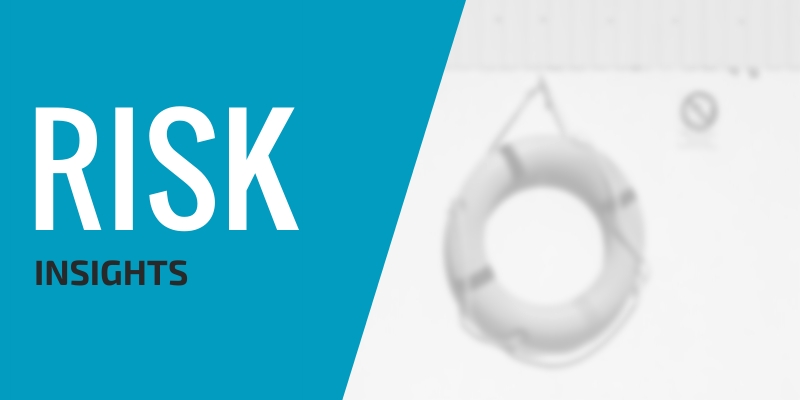 Commercial motor vehicle (CMV) drivers have a lot to consider when it comes to operating their vehicles safely.
Commercial motor vehicle (CMV) drivers have a lot to consider when it comes to operating their vehicles safely.
This is especially true during various seasons throughout the year—such as road construction season, which generally takes place from June through November.
After all, road construction can create numerous hazards for CMV drivers, seeing as they must navigate the additional risks of driving through work zones. In fact, according to the Federal Motor Carrier Safety Administration (FMCSA), an average of 700 work zone fatalities occur each year. What’s more, these incidents have increased by almost 9% in recent years. Work zones create increased hazards for drivers due to construction workers working close to moving traffic, dump trucks entering and exiting the construction area, flaggers redirecting traffic and lanes shifting unexpectedly.
As such, one area of risk that employers should be reviewing with their CMV drivers is maintaining work zone safety on the roadways. Specifically, it is important that employers ensure their CMV drivers understand best practices for safely driving through work zones, how to drive defensively in work zones and the importance of taking a proactive approach behind the wheel. Read this guidance to learn more.
Driving Safely Through Work Zones
There are a few measures that employers should have their CMV drivers follow when navigating through work zones. These include:
- Paying attention—Drivers should make sure to keep their eyes on the road at all times. In particular, it is against the law to make hand-held phone calls while driving, according to FMCSA regulations. Although drivers can use hands-free devices to make phone calls, they should never be on the phone while behind the wheel. Drivers should also take note of any signage in work zones and abide by all signage directions.
- Slowing down—Drivers should automatically slow down when entering and driving through a work zone. This is especially important if construction workers are physically present. Slowing down within work zones can also allow drivers more reaction time in the event of an unexpected hazard. No matter what the flow of traffic is, drivers should abide by the speed limit in construction zones at all times.
- Moving over to open lanes—Upon being notified of approaching work zones, drivers should move into open lanes early in order to safely distance themselves. Drivers should always check their blind spots before changing lanes to prevent potential accidents.
- Keeping a safe distance—Both in and out of work zones, drivers should allow adequate distance between themselves and other vehicles to help minimize rear-end accidents. This is an especially crucial practice, seeing as the FMCSA reported rearend collisions have increased by 29% in recent years.
Promoting Defensive Driving
CMV drivers have to constantly stay focused while driving to prevent accidents from occurring. That being said, it’s critical that CMV drivers carefully monitor other motorists’ driving behaviors behind the wheel. In doing so, drivers will be able to anticipate potential hazards or issues on the road and mitigate them before an incident happens. This is called defensive driving.
To help promote defensive driving habits, employers should instruct their CMV drivers to always scan about 15 seconds ahead of them for possible road hazards. This will provide drivers with suitable time to react to issues if they arise on the road. Scanning this far ahead is particularly important in work zones—especially if traffic merges into one lane or comes to a sudden stop.
This practice also allows drivers of larger commercial vehicles to have more time to brake and—in turn—prevent accidents. As a matter of fact, it takes a large vehicle almost double the distance to come to a complete stop when compared to that of a passenger vehicle. With this in mind, it’s all the more vital for drivers of large commercial vehicles to practice defensive driving strategies.
Taking a Proactive Approach
In addition to teaching defensive driving habits, employers should encourage their CMV drivers to practice researching their routes prior to their shifts. This can help drivers determine if there is any possibility of encountering road construction within their current routes and give them time adjust their routes (if possible) to avoid driving through work zones. This practice also helps CMV drivers better familiarize themselves with their routes and get comfortable with the roadways prior to travel.
However, employers should keep in mind that drivers are not always able to change their routes. When CMV drivers are unable to change their routes to avoid driving through road construction, they must prepare themselves for sudden breaking or slowing down and prioritize the aforementioned work zone safety guidelines.
Conclusion
Overall, CMV drivers have a difficult job—one that is compounded by the risk of driving through work zones during road construction season. However, employers who promote the importance of staying safe, paying attention and driving defensively in work zones can make all the difference in preventing potential accidents.
Reach out to us today for more driving safety tips and risk management guidance.
This Risk Insights is not intended to be exhaustive nor should any discussion or opinions be construed as legal advice. Readers should contact legal counsel or an insurance professional for appropriate advice. © 2021 Zywave, Inc. All rights reserved.

